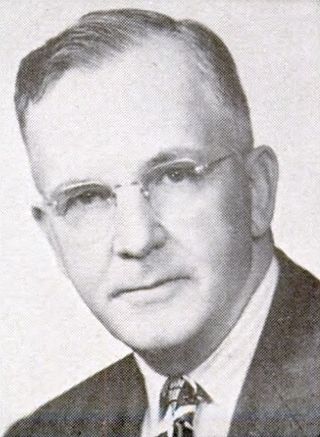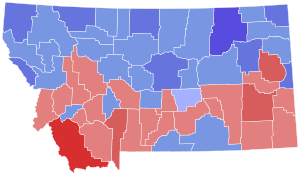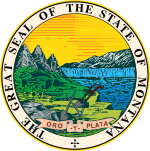
The 1978 United States Senate elections were held on November 7, in the middle of Democratic President Jimmy Carter's term. The 33 seats of Class 2 were contested in regular elections. Special elections were also held to fill vacancies.

The 1976 United States Senate elections was an election for the United States Senate. Held on November 2, the 33 seats of Class 1 were contested in regular elections. They coincided with Democrat Jimmy Carter's presidential election and the United States Bicentennial celebration. Although almost half of the seats decided in this election changed parties, Carter's narrow victory did not provide coattails for the Democratic Party. Each party flipped seven Senate seats, although, one of the seats flipped by Democrats was previously held by a Conservative.

The 1964 United States Senate elections were held on November 3. The 33 seats of Class 1 were contested in regular elections. Special elections were also held to fill vacancies. They coincided with the election of President Lyndon B. Johnson by an overwhelming majority, to a full term. His Democratic Party picked up a net two seats from the Republicans. As of 2023, this was the last time either party has had a two-thirds majority in the Senate, which allowed the Senate Democrats to override a veto, propose constitutional amendments, or convict and expel certain officials without any votes from Senate Republicans. However, internal divisions would have prevented the Democrats from having done so. The Senate election cycle coincided with Democratic gains in the House in the same year.

Wesley Abner D'Ewart was a U.S. Republican politician who served in the United States House of Representatives from Montana's 2nd congressional district from June 5, 1945, to January 3, 1955.

Roy Elmer Ayers was a U.S. Democratic politician. He served as a member of the United States House of Representatives and as the 11th Governor of Montana. He was the first governor of Montana to be born in what would become the state of Montana.

The 1996 United States Senate election in Montana took place on November 5, 1996. Incumbent United States Senator Max Baucus, who was first elected in 1978 and was re-elected in 1984 and 1990, ran for re-election. He was unopposed in the Democratic primary, and moved on to the general election, where he faced a stiff challenge in Denny Rehberg, the Lieutenant Governor of Montana and the Republican nominee. Despite Bob Dole's victory over Bill Clinton and Ross Perot in the state that year in the presidential election, Baucus managed to narrowly win re-election over Rehberg to secure a fourth term in the Senate.

The 1944 United States Senate election in Oklahoma took place on November 7, 1944. Incumbent Democratic Senator Elmer Thomas ran for re-election to a fourth term. Thomas once again faced a stiff challenge in the Democratic primary, this time from Congressman Wesley E. Disney and Lieutenant Governor James E. Berry. As was the case in 1938, Thomas won renomination only with a narrow plurality. In the general election, he faced former State Senator William J. Otjen, the 1942 Republican nominee for Governor. Though Thomas's performance was much reduced compared to six years prior, he still defeated Otjen by a wide margin.

The 2014 United States House of Representatives elections in Oklahoma were held on Tuesday, November 4, 2014, to elect the five U.S. representatives from the state of Oklahoma, one from each of the state's five congressional districts. The elections coincided with other elections to the United States Senate and House of Representatives and various state and local elections, including the Governor of Oklahoma and both of Oklahoma's United States Senate seats. Primary elections were held on June 24, 2014. Primary runoffs were held on August 26, 2014, in contests where no candidate won more than 50% of the vote.

The 2014 congressional election in Montana was held on November 4, 2014, to elect the U.S. representative from Montana's at-large congressional district. Between 1993 and 2023, Montana had one at-large seat in the House.

The 1930 United States Senate election in Montana took place on November 3, 1936. Incumbent United States Senator James E. Murray, who was first elected to the Senate in a special election in 1934, ran for re-election. He narrowly emerged from a competitive and close Democratic primary, wherein he was challenged by United States Congressman Joseph P. Monaghan, who represented Montana's 1st congressional district. In the general election, Murray was opposed by Thomas O. Larson, a State Senator and the Republican nominee, and Monaghan, who, after losing the primary, ran as an independent candidate. Murray ended up winning a second term, and his first full term, in a landslide, defeating both of his opponents by a comfortable margin.

The 1942 United States Senate election in Montana took place on November 3, 1942. Incumbent United States Senator James E. Murray, who was first elected to the Senate in a special election in 1934 and was re-elected in 1936, ran for re-election. Following his victory in a competitive Democratic primary, Murray advanced to the general election, where he was opposed by former United States Attorney for the District of Montana Wellington D. Rankin, the Republican nominee and brother of representative Jeannette Rankin. In a closely fought election, Murray narrowly defeated Rankin to win re-election to his third term and his second full term in the Senate.

The 1954 United States Senate election in Montana took place on November 2, 1954. Incumbent United States Senator James E. Murray, who was first elected to the Senate in a special election in 1934 and was re-elected in 1936, 1942, and 1948, ran for re-election. After winning the Democratic primary against trivial opponents, he advanced to the general election, where he was opposed by Wesley A. D'Ewart, the Republican nominee and the United States Congressman from Montana's 2nd congressional district. A contentious and close election ensued, but ultimately, Murray was able to narrowly win re-election over D'Ewart to a final term in the Senate.

The 1960 United States Senate election in Montana took place on November 8, 1960. Incumbent United States Senator James E. Murray, who was first elected to the Senate in a special election in 1934 and was re-elected in 1936, 1942, and 1948, and 1954, declined to seek re-election, creating an open seat. United States Congressman Lee Metcalf won out in a crowded Democratic primary and faced off against former United States Congressman Orvin B. Fjare, who won in a similarly-crowded Republican primary. Following a close general election, Metcalf narrowly defeated Fjare to win his first term in the Senate.

The 1968 Montana gubernatorial election took place on November 5, 1968. Incumbent Governor of Montana Tim Babcock, who became Governor upon the death of previous Governor Donald Grant Nutter and was elected in 1964, ran for re-election. He faced serious competition in the Republican primary from his Lieutenant Governor, but managed to comfortably win renomination. Advancing to the general election, Babcock faced Forrest H. Anderson, the Attorney General of Montana and the Democratic nominee, and independent candidate Wayne Montgomery of the New Reform Party. Ultimately, Anderson managed to defeat Babcock by a solid margin, winning his first and only term as governor. As of 2023, this is the last time an incumbent Governor of Montana lost re-election.

The 1960 Montana gubernatorial election took place on November 8, 1960. Incumbent governor of Montana J. Hugo Aronson, who was first elected governor in 1952 and was re-elected in 1956, declined to run for re-election. Donald Grant Nutter, a former state senator, narrowly won the Republican primary, and advanced to the general election, where he was opposed by Paul Cannon, the Lieutenant Governor of Montana and the Democratic nominee. Nutter defeated Cannon by a fairly wide margin, winning his only term as governor, as he would die just a year into his term.

The 1944 Montana gubernatorial election took place on November 7, 1944. Incumbent Governor of Montana Sam C. Ford, who was first elected Governor in 1940, ran for re-election. He won the Republican primary and moved on to the general election, where he was opposed by Leif Erickson, a former Chief Justice of the Montana Supreme Court and the Democratic nominee. Although then-President Franklin D. Roosevelt comfortably won the state in that year's presidential election, Ford defeated Erickson by a wide margin to win his second and final term as governor. This election is the first time that an incumbent Republican Governor of Montana was re-elected or won re-election.

The 1940 Montana gubernatorial election took place on November 5, 1940. Incumbent governor of Montana Roy E. Ayers, who was first elected governor in 1936, ran for re-election. He narrowly won the Democratic primary by just over a thousand votes to win renomination, and advanced to the general election, where he was opposed by Sam C. Ford, a former Associate Justice of the Montana Supreme Court and the Republican nominee. Ultimately, in spite of the fact that then-President Franklin D. Roosevelt comfortably won the state in that year's presidential election, Ford narrowly defeated Ayers to win his first of two terms as governor.

The 1932 Montana gubernatorial election took place on November 8, 1932. Incumbent Governor of Montana John E. Erickson, who was first elected governor in 1924 and was re-elected in 1928, ran for re-election. He won the Democratic primary with a plurality and advanced to the general election, where he faced Frank A. Hazelbaker, the Lieutenant Governor of Montana. Despite the fact that Franklin D. Roosevelt carried the state in a landslide in the presidential election that year, Erickson only narrowly defeated Hazelbaker to win re-election to his third and final term as governor, though he would later resign just a few months into his term to appoint himself to the United States Senate.

The 1924 Montana gubernatorial election took place on November 4, 1924. Incumbent governor of Montana Joseph M. Dixon, who was first elected governor in 1920, ran for re-election. Dixon won a competitive Republican primary, and moved on to the general election, where he faced John E. Erickson, a former district court judge and the Democratic nominee; and Frank J. Edwards, the 1916 Republican nominee for governor and the Farmer–Labor Party nominee. Ultimately, Erickson managed to defeat Dixon in his bid for re-election, winning what would be the first of three terms as governor.

Elections were held in Illinois on Tuesday, November 3, 1936.























